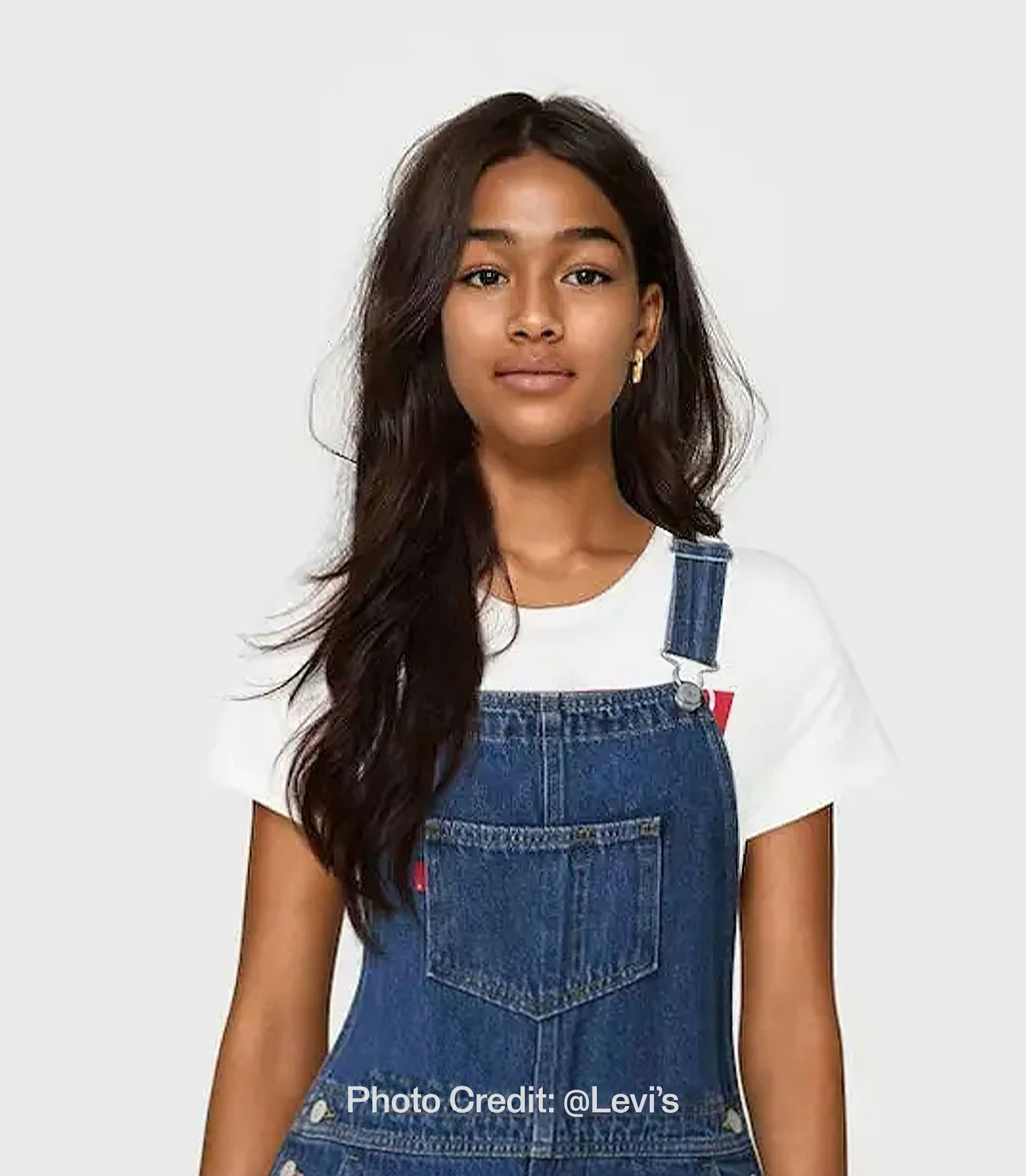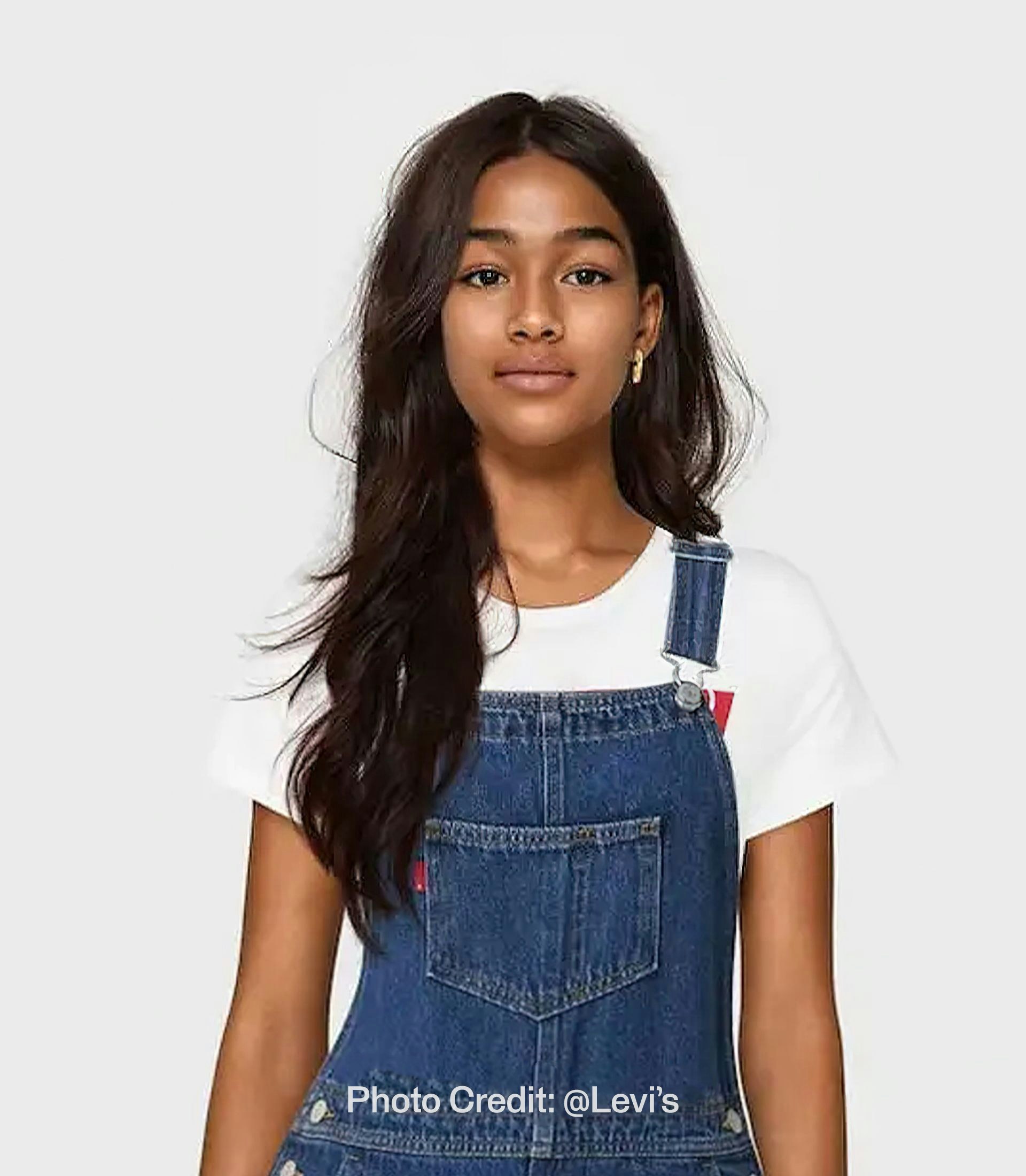
words by
Mariam Gonzalez
April 06, 2023
culture hack
AI Is Not Your Diversity Quick Fix
The lack of representative diversity in brands has long been a huge topic of discussion, particularly after the reflection and reckoning our industry went through after 2020. While progress has been made, there also has been no shortage of blowback towards misguided attempts.
The most recent controversy has been brewing around Levi’s. Their latest announcement featured a partnership with Lalaland.Ai to use AI-generated models with more diverse skin tones and body types to showcase their products more sustainably. According to the brand, it is not “feasible” for them to have real models that represent every possible combination of race, ethnicity, age, body size, and body type.
While “feasibility” may be what’s holding them back, it’s time to mention the elephant in the room. If you want to be more diverse, you must put your money where your mouth is. The uproar from the public comes from the simple fact that the brand isn’t actually putting in any of the work in diversifying its brands. When they should be using their dollars to actually hire and support models of various body types and skin tones, they’re not providing them with the opportunity for exposure.
Misa Chien said it best, this approach highlights what many global brands do towards diversity and inclusion, placing emphasis on looking diverse in external communication rather than investing time, resources, and effort into their diversity and inclusion strategies.
The brand released a statement on Tuesday that states, "We are not scaling back our plans for live photo shoots, the use of live models, or our commitment to working with diverse models. Lalaland.ai's technology, and AI more broadly, can potentially assist us by allowing us to publish more images of our products on a range of body types more quickly." Even if this is true, it seems the point is not coming across.
When it comes to efforts for diversification the best way to go about it is to provide diverse individuals with the same opportunities as white, skinny models. Levi’s missed the mark on what really makes an impact and makes brands feel more inclusive. When a brand represents itself the way the rest of the world looks, its audience will begin to resonate with them more. Thus, building brand affinity and attracting more people to engage with the brand.
Although there seem to be no plans for Levi’s to go back on their use of AI-generated models and give the people what they want due to the backlash, we hope this serves as a lesson for other brands. A Twitter user said it best, "Your diversity doesn't count if you're not diversifying who's on the payroll”. It’s more than just appearing more diverse, there is work to be done from within to diversify those in positions of power and the way a brand invests in their DE&I.





















